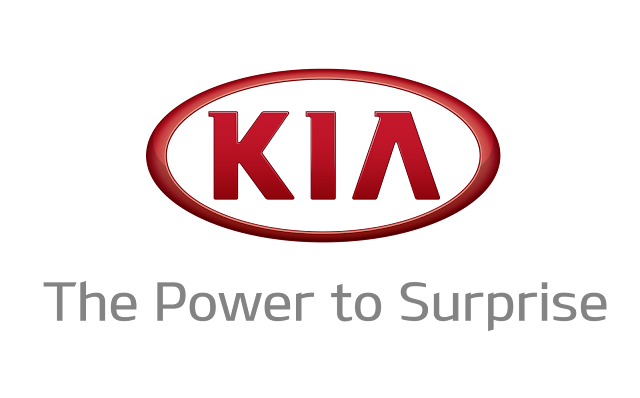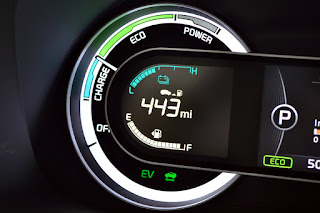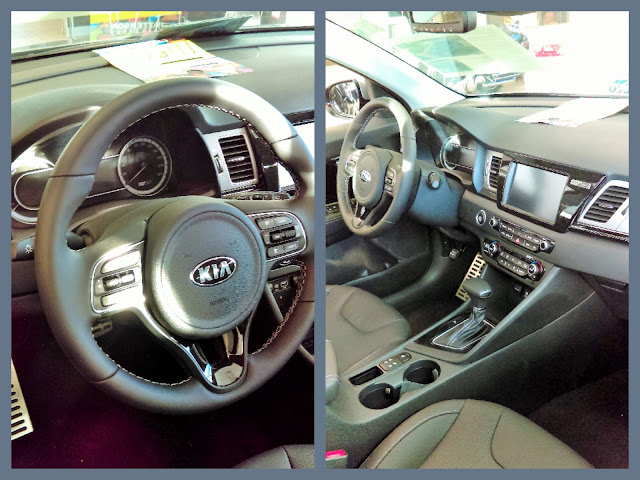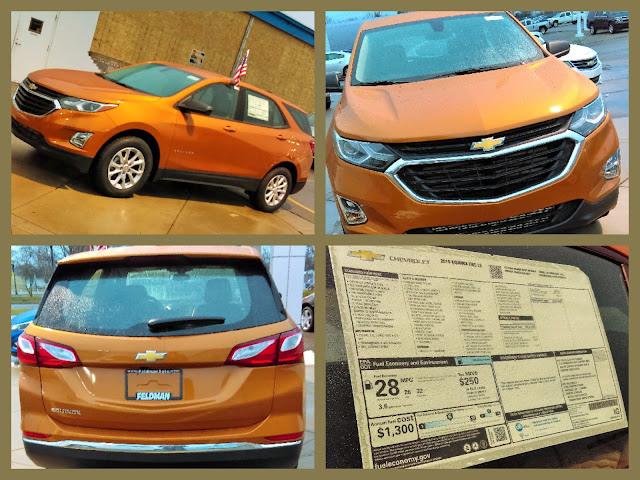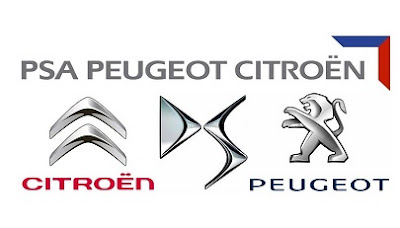2018 Ford
Fiesta ST – Less May Just Be More
 |
| Ford's 2018 Fiesta ST is packing some additional sport that seeks to make it an even hotter hatch. |
Hot hatches are in high demand these
days, so Ford’s recent announcement that a new Fiesta ST is on the way should
come as no surprise. At first glance, I couldn’t really see a whole lot that
was different between the 2017 and 2018 Fiesta ST. However, what’s truly changed
is underneath the car’s surface. Ford has replaced the previous 1.6-liter turbocharged
four-cylinder engine with a new 1.5-liter turbocharged three-cylinder engine.
Power from the all-new aluminum 1.5-liter Ecoboost is rated at 197 HP and 214 pound-feet
of torque, and 0-60 is rated at 6.7 seconds, a time that is similar to the
outgoing model. What’s unique about this setup, aside from the fact that this
powertrain is now lacking an extra cylinder, is that the engine can deactivate
a cylinder to save fuel. Supposedly, this process occurs so smoothly until it
doesn’t affect performance. I find this to be somewhat frivolous, since a
three-cylinder engine is likely to already be highly fuel efficient, despite
its performance aspirations. Also, three-cylinder engines are known to feel
quite different when driving them when compared to a four-cylinder engine. That’s
another topic.
Big Content, Small Package
 |
| A manual transmission coupled with new drive modes and a rethought interior ought to make the 2018 Fiesta ST even more appealing to those who see premium performance in a small package. |
Now, if you were hoping that this
subcompact would eventually switch to rear-wheel drive, then you’re going to
have to keep dreaming. The 2018 Fiesta ST will continue to be a front-wheel
drive car, but will offer a manual transmission for the performance heads. In
addition to this, the Fiesta ST will continue to offer a torque-vectoring
system that will work to reduce understeer and new drive modes (Normal, Sport,
and Track), which should further spice things up. These modes will alter
various mechanical aspects, such as the traction and stability control systems,
throttle response, power steering system, and exhaust settings. Liquid Blue
will be a new exterior color for the 2018 Fiesta ST, and more personalization
options will be available for the interior. Recaro sports seats and Sync 3 are
just a couple of the things that can be found on the inside of this new model.
What do you think of this
redesigned hot hatch Fiesta? After being officially unveiled at the 2017 Geneva
Motor Show, expect Ford to release the new Fiesta ST in early 2018.
___________________________________________________________________________
Porsche’s Green Machine: 2018 Panamera
Turbo-S E-Hybrid
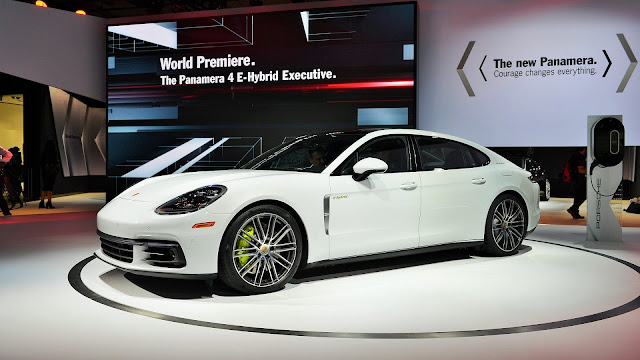 |
| The Porsche Panamera Turbo S E-Hybrid seeks to give luxury, performance, and efficiency all a new look. Can it do it? |
Porsche isn’t the first company you’d
think of when you hear the word “hybrid”, but you might just think of them when
you hear “performance”. Now, the company wants you to mesh the two images together,
because the new Panamera Turbo S E-Hybrid seeks to be the best of both worlds.
Serving as the new top-end model in the Panamera lineup, the Turbo S E-Hybrid
will come with a twin-turbo V8 engine combined with an electric motor, good for
a total 680 horsepower. This makes this new Panamera the second most powerful
Porsche ever, behind only the 918. Definitely impressive! By itself, the electric
motor makes 136 HP. A 14.1-kWh lithium-ion battery pack will provide an
electric-only range of 31 miles and can be charged in 6 hours through a standard
3.6-kilowatt onboard charger, or 3 hours through a 7.2-kilowatt charger
connected to a 240-volt outlet. An 8-speed automatic transmission is standard,
as is all-wheel-drive. Thus, power delivery will likely feel very linear.
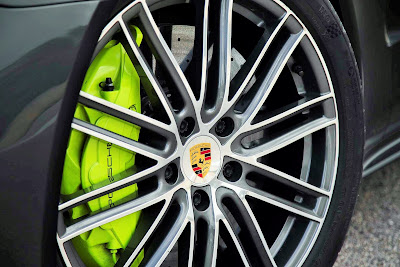 |
| These lime green brake calipers really accent the Panamera's rims well. |
Performance Comes Standard
As you’d expect, a slew of
performance-enhancing features come standard on this model, such as ceramic
brakes, torque vectoring, an anti-roll active suspension system, and
essentially every modern luxury and safety feature you could possibly want I’m
sure. I particularly like the green brake calipers if I do say so myself. These performance features do their job apparently, because Porsche says that
the Panamera Turbo S E-Hybrid will do 0-60 in 3.2 seconds and reach a top speed
of 193 MPH. Given the power boost provided by the electric powertrain, I’m
willing to bet that it’ll be even faster than that and that the off-the-line
torque will be strong. However, acceleration may be occasionally blunted by the
fact that this car will weigh over 5,000 pounds and comes in two lengths. There’s
a 5.9-inch longer wheelbase version (the Executive) that comes with standard
rear steering and more luxury features, such as power rear seats and four-zone
climate control. Yes, this hybrid Panamera seeks to be the ultimate efficiency
and luxury package.
Wallets Beware
…However, all this power and luxury
comes at a price. And it’s a relatively steep one, so prepare your wallet. The regular-length
Turbo S-E Hybrid starts at $182,450, and the Executive at $195,850. This money
will get many of the aforementioned features, however there’s STILL options
available. Hey, you gotta pay the cost to be the boss! Looks like Tesla has
some hungry competition it seems like.
Would you consider the 2018
Panamera Turbo S E-Hybrid? Expect this model to release in the second half of
2017.
___________________________________________________________________________
Transaction Approved: GM Sells Opel
 |
| General Motors has owned Vauxhall since 1925 and Opel since 1931. However, a major shake up has just recently been finalized. |
This is a PSA! GM has officially
sold Opel and Vauxhall to France’s PSA. And no, the brands were not sold
through a “public service announcement”. A couple weeks ago, General Motors
entered into discussions to sell its Opel and Vauxhall brands to PSA Group,
parent company of Peugeot and Citroen. This decision comes as GM seeks to offset
declining sales in Europe, but this is still interesting given that GM has owned
both brands for nearly a century. The deal was recently finalized. GM’s other brands
are hardly relevant in Europe, as Chevy only sells the Corvette there now and
Cadillac has hardly any market share. Thus, selling these two brands could be a
sign that GM is willing to throw in the towel on the European market.
What's Down The Road?
GM had a small stake in PSA at one
point in time, but then sold this stake in 2013. However, the two automakers
continued to jointly develop products even after this sale took place. Further
cost-cutting will likely happen because of this latest sale, and that means
jobs will certainly be lost. But what’s more interesting to me is that Opel has
been a key source for sending European products to North American roadways,
first through the Saturn brand, and now through Buick. If this sale means the
end of that process potentially, Buick could be in some long-term trouble. Many
products, such as the Regal (the Opel Insignia in Europe), have been very
well-rounded and good sellers for Buick in North America. My mother’s 2013
Regal has been fantastic, and is a very sporty car to drive. My 2008 Saturn
Aura has been a wonderful car, too. I hope there’s some way that this product
arrangement can continue in the future, since it hangs somewhat in limbo right
now. GM seems to have unloaded many decent brands in the last 10 years or so…
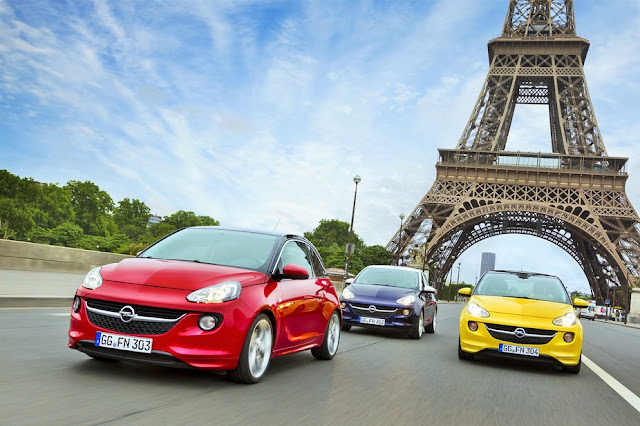
Have you purchased any of the “Americanized“
Opel products, and what is your opinion on this sale? How do you think Opel and
Vauxhall will fare under PSA Group’s ownership? We will see how things go as
time continues to pass.
That’s
all for now, stay tuned for more content later! Until next time: ROLL ON!
Copyright © 2017 Adam's Autos, All Rights Reserved.

